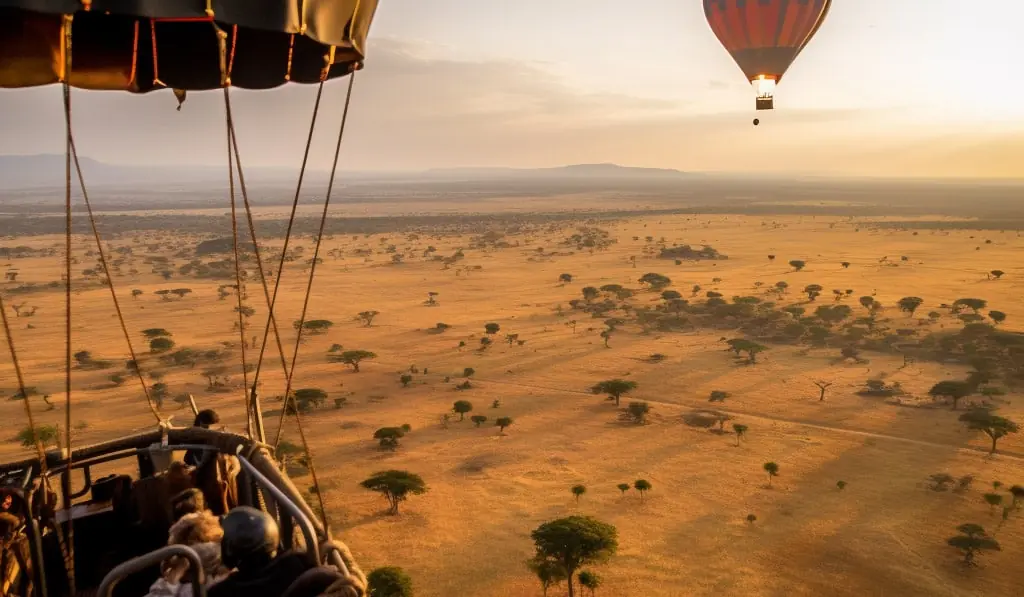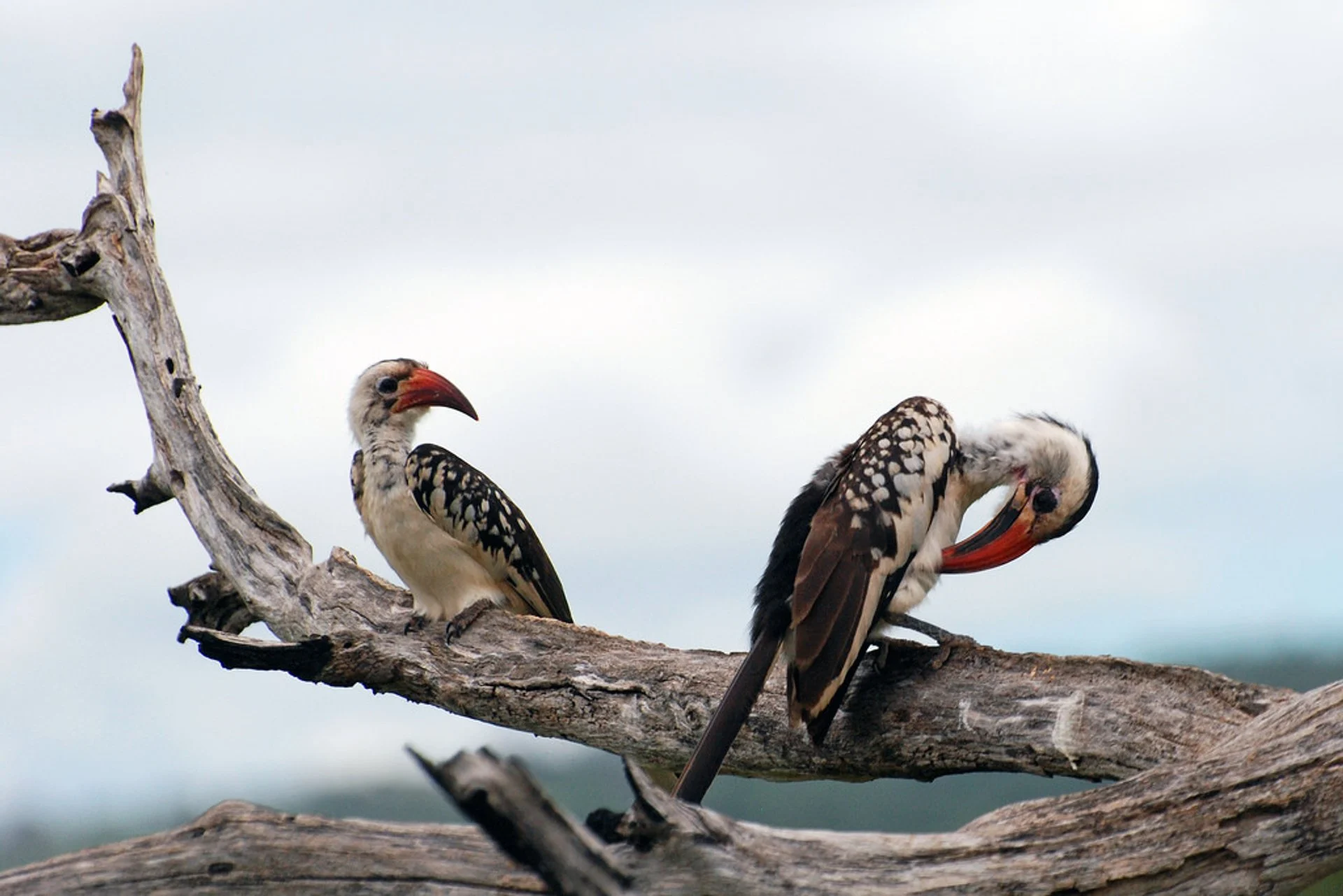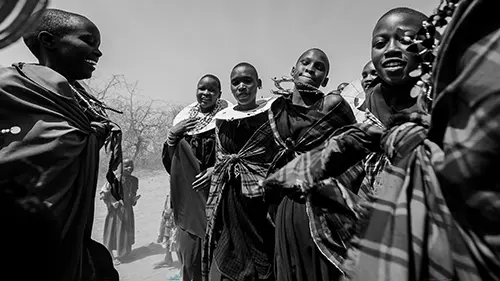
Explore the legendary Serengeti National Park, home to the Great Migration and the Big Five, offering unparalleled wildlife encounters and breathtaking landscapes.
Serengeti National Park teems with an extraordinary diversity of wildlife, making it one of Africa’s premier safari destinations. The park is renowned for its populations of the Big Five – lions, elephants, buffalos, leopards, and rhinoceros – as well as cheetahs, giraffes, zebras, hyenas, and numerous antelope species. Additionally, the Serengeti hosts the largest mammal migration on Earth, the Great Migration, where millions of wildebeests, zebras, and gazelles traverse the plains in search of food and water. Its diverse ecosystems, from open grasslands to riverine forests, provide habitat for a wealth of bird species, including raptors, waterfowl, and migratory birds.

Go on thrilling safaris to encounter Serengeti's iconic wildlife, led by experienced guides.

Soar above the Serengeti plains at sunrise, witnessing breathtaking views and wildlife from above.

Discover the park's rich birdlife, with over 500 bird species, including raptors, waterfowl, and migratory birds.

Enjoy sundowner cocktails at scenic viewpoints, witnessing stunning sunsets over the Serengeti landscape.

Capture the park's beauty and wildlife diversity with expert guidance on photography techniques and locations.

Indulge in a unique dining experience under the African sky, surrounded by the sounds of the wilderness.

Go on thrilling safaris to encounter Serengeti's iconic wildlife, led by experienced guides.

Explore the wilderness on foot, accompanied by knowledgeable guides, for a closer connection to nature.

Soar above the Serengeti plains at sunrise, witnessing breathtaking views and wildlife from above.

Discover the park's rich birdlife, with over 500 bird species, including raptors, waterfowl, and migratory birds.

Engage with local Maasai communities to learn about their traditional lifestyles, customs, and cultural heritage.

Enjoy sundowner cocktails at scenic viewpoints, witnessing stunning sunsets over the Serengeti landscape.

Capture the park's beauty and wildlife diversity with expert guidance on photography techniques and locations.

Learn about Serengeti's conservation efforts and visit research centers to understand ongoing wildlife protection initiatives.

Experience the park's nocturnal activities, spotting elusive predators and other nocturnal creatures under the stars.

Indulge in a unique dining experience under the African sky, surrounded by the sounds of the wilderness.
We specialize in crafting personalized tours, offering immersive wildlife encounters and unforgettable experiences in Tanzania’s top national parks and reserves.